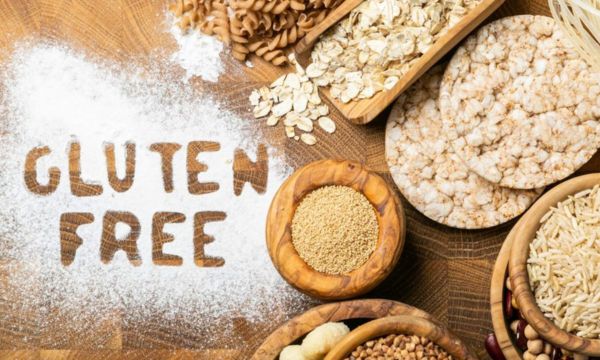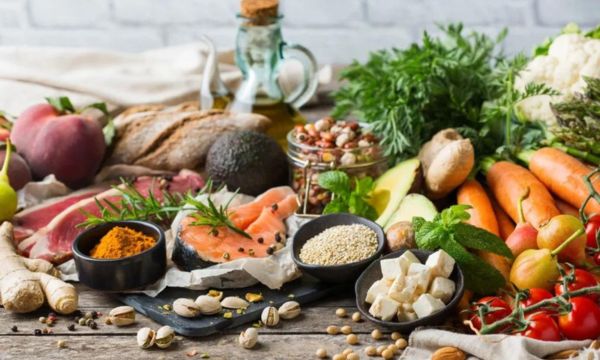Mastering Portion Control for Weight Management
Portion control is a powerful tool in the fight against weight gain. With so many delicious snacks and meals all around us, it’s easy to forget to pay attention to how much we eat. However, it is one of the most important parts of maintaining a healthy weight and overall health. Mastering portion control isn’t about staring at yourself; It’s about understanding what our body needs and giving it what it needs. In this complete guide, we discuss the importance of portion control, how to do it in real life, and how it can be a big step toward health and balance.
Understanding Portion Distortion:
In this age of unlimited meals and dishes, our ideas about how much food we should eat have changed. What we consider serving size today may be two to three times the actual recommended serving size. This change had a major influence on the increase in fat percentage. The first step to regaining control of your eating habits is to notice this trend.
The Benefits of Portion Control:
1. The Link between Calories and Weight Loss
Calorie intake is directly related to how much you eat. By reducing portion sizes, we naturally consume fewer calories. When this calorie deficit continues, people lose weight. On the other hand, eating too much, even healthy food, can make losing weight more difficult.
2. Watch Blood Sugar Levels
By paying close attention to how much you eat, especially your carbohydrate intake, you can keep your blood sugar levels under control. The rise and fall of blood sugar levels can cause people to crave food and lead to overeating. Paying attention to portion sizes can help maintain stable energy levels throughout the day.
3. Gut Health
Taking large amounts can put too much strain on the digestive system, causing pain, bloating and digestive problems. Just the right portion size helps your body digest food and absorb nutrients, which is good for digestion.
4. Spiritual Satisfaction
Controlling portion sizes teaches us to enjoy the taste and feel of food. Eating small portions slowly and thoughtfully can be just as satisfying as eating large portions quickly. This approach can help people develop a better relationship with food.
Practical Ways to Observe Your Diet:
1. Use Narrow Plates and Bowls
How much we eat is directly related to how big our plate is. Placing food on smaller plates and bowls makes it seem like there is more food on the plate, making us feel fuller.
2. Use the “Plate Method”
Half of your plate should consist of vegetables, a quarter of lean protein, and the other quarter of whole grains or starchy vegetables. This method ensures that you get the right amount of nutrients.
3. View Calories in Liquids
Sugary drinks and alcohol can add a lot of calories to your diet. Choose water, herbal tea or water with added fruit and herbs. If you want to be kind to yourself, do it gently and in moderation.
4. Pay Attention to Your Body
Look for signs that you are hungry or full. Eat slowly, savoring every bite and stopping when you are full, but not full yet. It takes a while for your brain to realize that you are full, so taking breaks between meals can prevent you from overeating.
5. Snack Set
Snacks such as nuts, fruit or yogurt can be placed in smaller bags or packets. Eating pre-measured snacks can prevent mindless eating and help you control the amount of calories you eat.
6. Read Food Labels
It’s important to know the serving sizes on food labels. A package may appear to contain only one instance, but it may actually contain more than one instance. Pay attention to how much you eat and adjust your intake accordingly.
Adopt a Healthy Lifestyle:
Portion control is not about following strict rules; It’s about finding balance and staying healthy. It allows you to treat yourself every now and then, while becoming healthier overall. Portion control is an important part of a healthy lifestyle, along with regular exercise and a balanced diet.
Managing the Impact of Social and Cultural Factors:
Food often plays a central role in social activities and cultural norms, making it difficult to control how much you eat. But trust and being able to talk to people are powerful tools. You can politely say “no” to seconds or choose a smaller amount without making anyone angry. Learning to enjoy the social side of parties without overindulging can be very powerful and can help you achieve your health goals.
Celebrate Progress, Not Perfection:
The goal is not perfection, but growth. It’s normal to make a mistake every now and then. Don’t give in to shame. Instead, admit your mistakes, learn from them and move on. You should be proud of your achievements, no matter how small. Every step you take to learn how to control how much you eat is a step toward better health and happiness.
Conclusion:
Knowing how much to eat doesn’t happen overnight. This is a commitment to your health and well-being for the rest of your life. By eating mindfully, understanding what your body needs, and developing a relationship with food, you can begin a journey that will change your life. Portion control isn’t about limiting yourself; It’s about giving yourself the freedom to make choices that empower you and lead to a balanced, healthy life.
FAQs:
1. What is portion control? Why is it critical for weight management?
Portion control involves managing the amount of food you eat, which is essential for controlling calorie intake. It plays an important role in weight management by preventing overeating and promoting a balanced diet.
2. Can I still enjoy my favorite foods with portion control?
Yes, portion control does not mean deprivation. You can enjoy your favorite dishes in moderation. It’s about understanding portion sizes and making careful choices that allow for the occasional treat while maintaining a healthy balance.
3. How do I know if my portion sizes are right for my body?
Serving sizes may vary based on factors such as age, gender, activity level and health goals. Using tools such as small plates, the plate method, and watching for hunger cues can help you determine appropriate portion sizes based on your personal needs.
4. Is portion control just about reducing food intake?
Portion control isn’t just about eating less; It’s about good food. It’s about balancing nutrition, enjoying a variety of foods and appreciating the taste and satisfaction of a small, balanced diet. This is a holistic approach to healthy eating.
5. How do you control portions at social and special occasions?
Navigating social events can be challenging, but communication and trust are key. You can politely decline the second portion or choose a smaller portion while enjoying the social atmosphere of the party. It’s about making conscious choices without compromising your health goals.
 Living Gluten-Free: A Comprehensive Guide
Living Gluten-Free: A Comprehensive Guide
Gluten-free living has gone from being the only option for a small group of people to being […]
More Understanding Daily Nutritional Needs
Understanding Daily Nutritional Needs
With all the nutritional recommendations out there, it can be difficult to figure out what to eat […]
More Going Vegan: What You Need to Know
Going Vegan: What You Need to Know
Veganism is not just a choice about what to eat; It’s also a commitment to a mindset […]
More